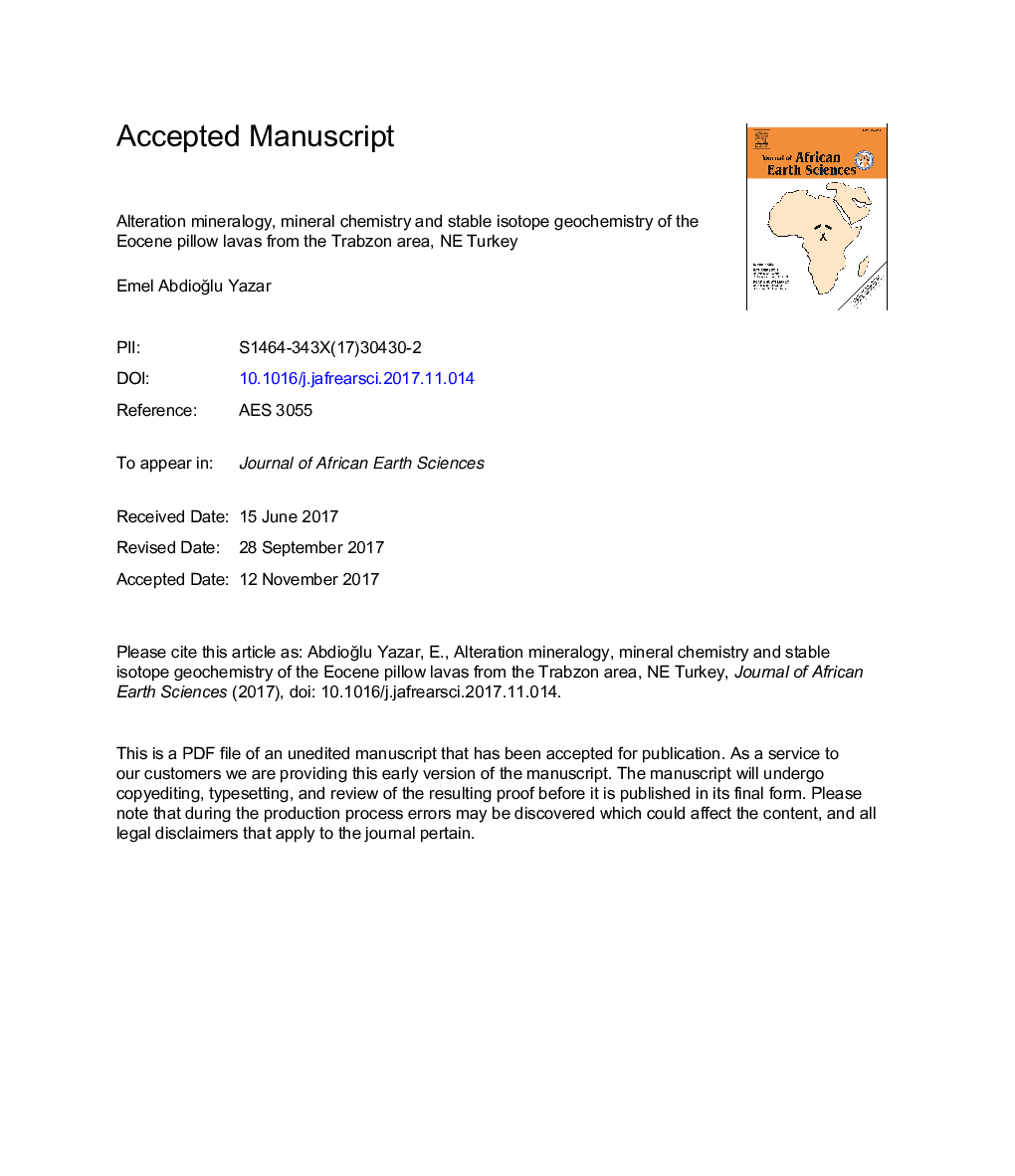| Article ID | Journal | Published Year | Pages | File Type |
|---|---|---|---|---|
| 8913659 | Journal of African Earth Sciences | 2018 | 54 Pages |
Abstract
The Eocene subaqueous volcanic units in NE Turkey developed as pillow, closely packed pillow, isolated pillow, pillow breccia, hyaloclastite breccia and rare peperitic facies with red micritic limestones. They are locally set on volcaniclastic sandstone and claystone alternations and gradually pass to tuffs and volcanic breccias. The pillow lava samples generally exhibit intersertal, intergranular, microlitic porphyritic, variolitic, vesicular and glomeroporphyritic and glassy textures with clinopyroxene (Wo47-52En40-45Fs6-8), plagioclase (An10 to An96), olivine (Fo79-87) and Fe-Ti oxides (Usp0-0.27). Saponite, interlayered chlorite/saponite, rare beidellite and calcite were determined after olivine, rarely after plagioclase as well as in the glassy groundmass. Illite was restricted to plagioclase and the glassy groundmass. Na-Ca zeolites, chlorites/saponites, beidellite, dolomite and calcite occur as void infillings and in the glassy groundmass. Mineralogical, lithochemical and isotopic interpretations as well as thermometric calculations reveal a low-temperature seawater alteration in a semi-closed environment for the alteration of primary minerals and volcanic glass in addition to sealed vesicles and open systems for crosscutting veins. Due to the short exposure time intervals of seawater to rocks, the total chemistry of the rocks is not fully changed and most of the elements seem to be immobile, remaining in the system as a result of precipitation in voids and cracks. Thermometric estimations indicate that, the temperature of heated seawater is approximately 160 °C at the highest point especially in the vesicles, and decreases to approximately 85 °C due to circulation, resulting in alterations of the primary phases and volcanic glass.
Related Topics
Physical Sciences and Engineering
Earth and Planetary Sciences
Geology
Authors
Emel AbdioÄlu Yazar,
